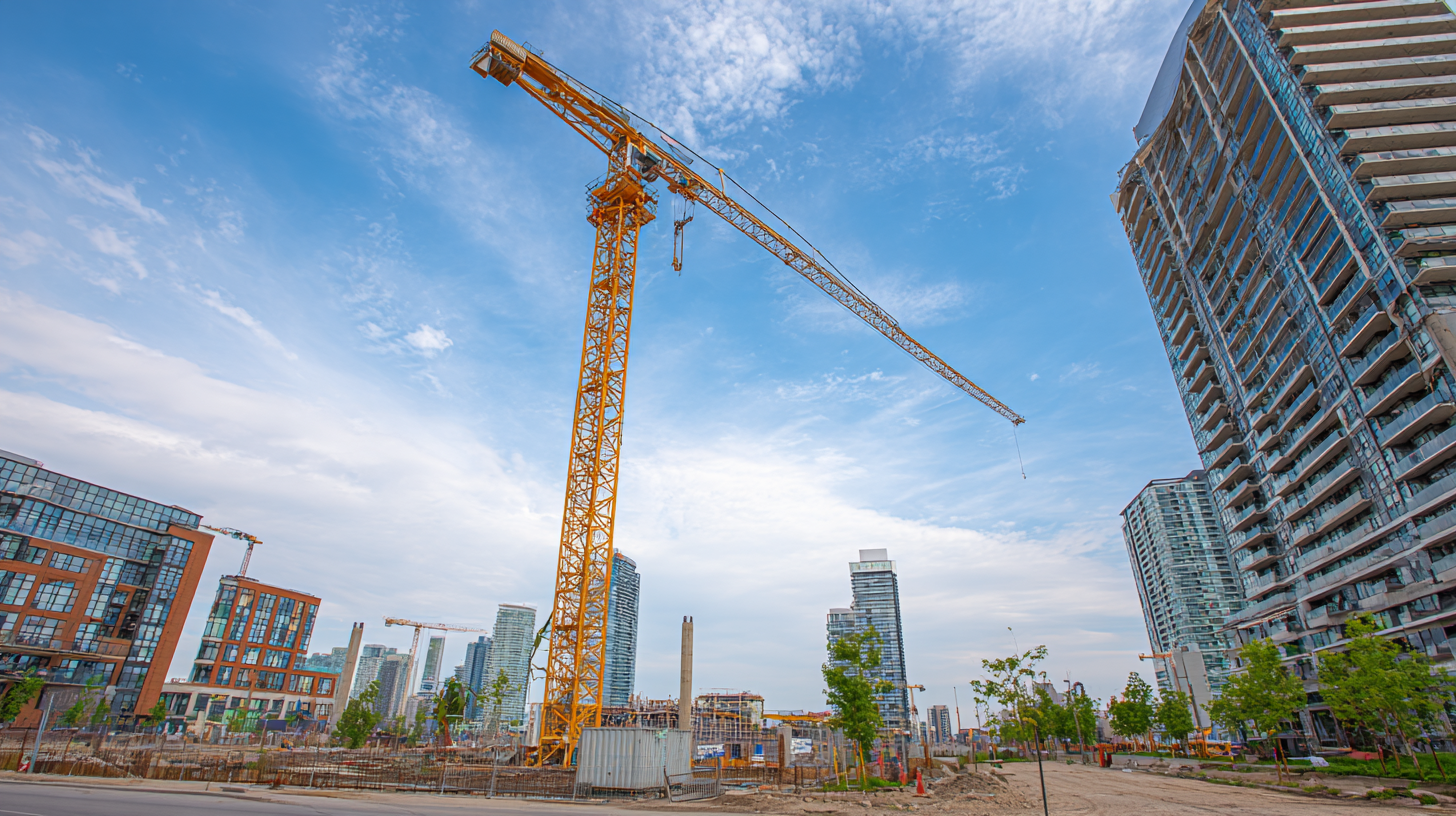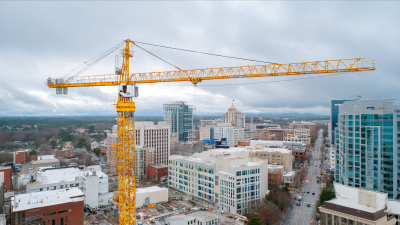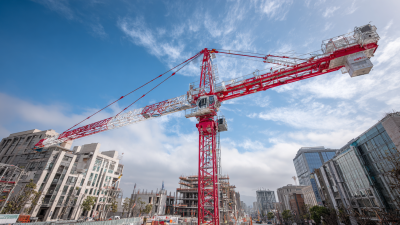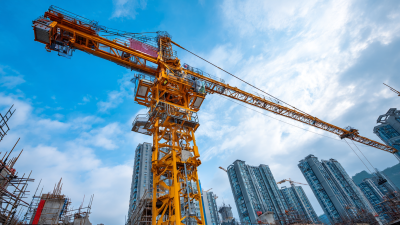As the construction industry continues to evolve, the demand for efficient and reliable equipment rental services has surged. Among these, "Tower Crane Rental" stands out as a crucial component, enabling projects to reach new heights—literally and figuratively. According to industry expert Mark Thompson, a leading voice in construction machinery, "The right tower crane can significantly enhance project efficiency and safety, making its rental an essential consideration for construction managers."

In light of this growing importance, identifying the top players in the tower crane rental market is vital. In 2025, several companies have emerged as leaders, providing innovative solutions and exceptional service. The insights from these industry frontrunners not only illuminate the landscape of tower crane rentals but also underscore the value they bring to construction projects around the globe.
By examining the top ten tower crane rental companies that have made their mark this year, we can better understand the trends shaping the industry, the competitive advantages of each company, and the future of tower crane rentals as projects scale ever higher.
The tower crane rental market is experiencing significant growth, with projections indicating it will reach USD 22.1 billion by 2030. This expansion can be attributed to the surging demand for construction activities in both residential and commercial sectors. Key statistics suggest that regions with rapid urbanization and infrastructure development are particularly driving this trend. As construction companies look to optimize their expenditure, renting tower cranes has become a financially viable option, enabling them to access advanced equipment without the need for substantial capital investment.
Furthermore, advancements in technology are reshaping the landscape of the tower crane rental market. Innovative features such as telematics and remote monitoring systems are enhancing operational efficiency and safety, appealing to a wider range of contractors. Industry reports indicate that these technological integrations are not only improving productivity but are also facilitating compliance with stringent safety regulations. As the sector continues to evolve, businesses seeking to thrive in this competitive environment must stay updated with the latest market trends and leverage data-driven insights to inform their strategic decisions.
| Rank | Market Share (%) | Revenue (Million USD) | Number of Cranes | Geographic Presence |
|---|---|---|---|---|
| 1 | 20.5 | 250 | 350 | North America, Europe |
| 2 | 18.2 | 220 | 280 | Asia, Middle East |
| 3 | 15.7 | 190 | 250 | North America, Australia |
| 4 | 12.0 | 150 | 200 | Europe, Africa |
| 5 | 10.4 | 120 | 180 | Asia, Europe |
The tower crane rental industry is witnessing notable growth, with a market valued at USD 16.3 billion. Key players in this competitive landscape are leveraging their capabilities to enhance revenue and expand their market share. Notably, the trend towards rental-based heavy lifting solutions is transforming the construction and infrastructure sectors, presenting a significant opportunity for companies to capitalize on.
As the demand for efficient and versatile lifting equipment continues to rise, prominent firms are positioning themselves to capture a larger share of the market. In regions like China, while the potential remains vast, industry players face hurdles that require strategic navigation. Insights from industry analysts indicate that understanding regional market dynamics and fostering strong supply chain relationships will be crucial for success in the tower crane rental sector as we approach 2025 and beyond.

The tower crane rental market is undergoing a significant transformation driven by innovative technologies that enhance both efficiency and safety. According to recent industry forecasts, the market is projected to reach USD 22.1 billion by 2030, highlighting an increasing demand for advanced lifting solutions in high-rise construction and infrastructure projects. A key player in this evolution is the introduction of remote-operated technologies, such as the groundbreaking Skyline Cockpit, which allows operators to manage tower cranes effectively from the ground. This innovation not only streamlines operations but also enhances safety by minimizing the risks associated with working at height.

In addition to remote operations, the integration of autonomous cranes is set to rise, with a projected market size growth reflecting the benefits of automation in construction. Industry reports indicate that the autonomous cranes market is expected to expand significantly by 2033, driven by advancements in crane technology that offer improved operation efficiency. As these innovative solutions are adopted by contractors worldwide, they help to address challenges associated with traditional tower crane usage, leading to safer and more efficient construction practices that are paving the way for ambitious projects.
The tower crane rental market is projected to experience significant growth, with a forecasted value of USD 22.1 billion by 2030. This upward trajectory is driven by a robust demand for construction and infrastructure development across several regions. Among the leading markets for tower crane rentals in 2025, North America, Europe, and Asia are expected to dominate due to a surge in large-scale projects and urbanization trends. As these regions invest heavily in infrastructure to accommodate growing populations, the reliance on efficient and reliable tower crane rentals becomes increasingly critical.
Regional insights highlight the dynamic nature of the UAE market, which is thriving on a construction boom fueled by mega projects and smart city initiatives. With an ever-expanding skyline and substantial investment in infrastructure, UAE stands out as a key player within the global crane rental industry. The competitive landscape in these regions will also shape opportunities for rental companies, emphasizing the need for strategic growth and adaptability to cater to the evolving demands of the construction sector.
This chart presents the projected market size for tower crane rentals across key regions in 2025, showcasing significant growth in the Asia-Pacific and European markets. These insights can help stakeholders understand market dynamics and prepare for upcoming opportunities.
In recent years, the crane rental industry has increasingly prioritized sustainability, driven by both regulatory pressures and client demand for environmentally responsible practices. According to a report by the Global Construction Industry, approximately 75% of construction companies are now seeking green construction solutions, which include renting equipment from companies that emphasize eco-friendly operations. Many top tower crane rental companies are actively adopting greener technologies and practices, such as utilizing electric cranes and implementing efficient fuel management systems to reduce emissions.
Additionally, leading firms in the sector are investing in the development of cranes that are not only more fuel-efficient but also manufactured using sustainable materials. Data from the Construction Equipment Manufacturers Association (CEMA) indicates that rentals incorporating sustainable innovations can lead to a 30% reduction in carbon footprint compared to traditional cranes. This shift not only aligns with global sustainability goals but also enhances the operational efficiency of construction projects, which is increasingly becoming a key differentiator in a competitive market. As the industry moves forward, those companies that embrace these green initiatives are likely to stay ahead of the curve while meeting the evolving expectations of their clients.






